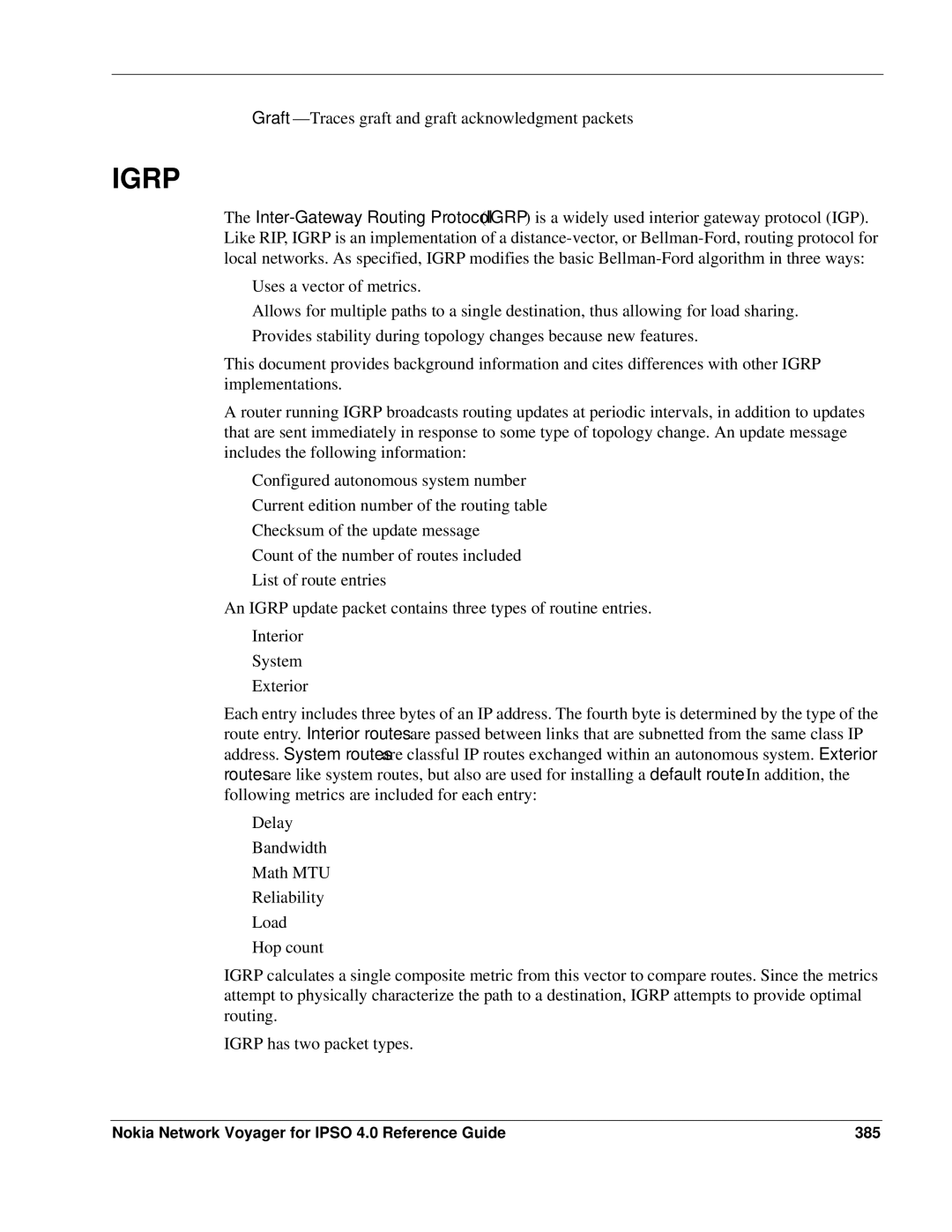
IGRP
The
Uses a vector of metrics.
Allows for multiple paths to a single destination, thus allowing for load sharing.
Provides stability during topology changes because new features.
This document provides background information and cites differences with other IGRP implementations.
A router running IGRP broadcasts routing updates at periodic intervals, in addition to updates that are sent immediately in response to some type of topology change. An update message includes the following information:
Configured autonomous system number
Current edition number of the routing table
Checksum of the update message
Count of the number of routes included
List of route entries
An IGRP update packet contains three types of routine entries.
Interior
System
Exterior
Each entry includes three bytes of an IP address. The fourth byte is determined by the type of the route entry. Interior routes are passed between links that are subnetted from the same class IP address. System routes are classful IP routes exchanged within an autonomous system. Exterior routes are like system routes, but also are used for installing a default route. In addition, the following metrics are included for each entry:
Delay
Bandwidth
Math MTU
Reliability
Load
Hop count
IGRP calculates a single composite metric from this vector to compare routes. Since the metrics attempt to physically characterize the path to a destination, IGRP attempts to provide optimal routing.
IGRP has two packet types.
Nokia Network Voyager for IPSO 4.0 Reference Guide | 385 |
